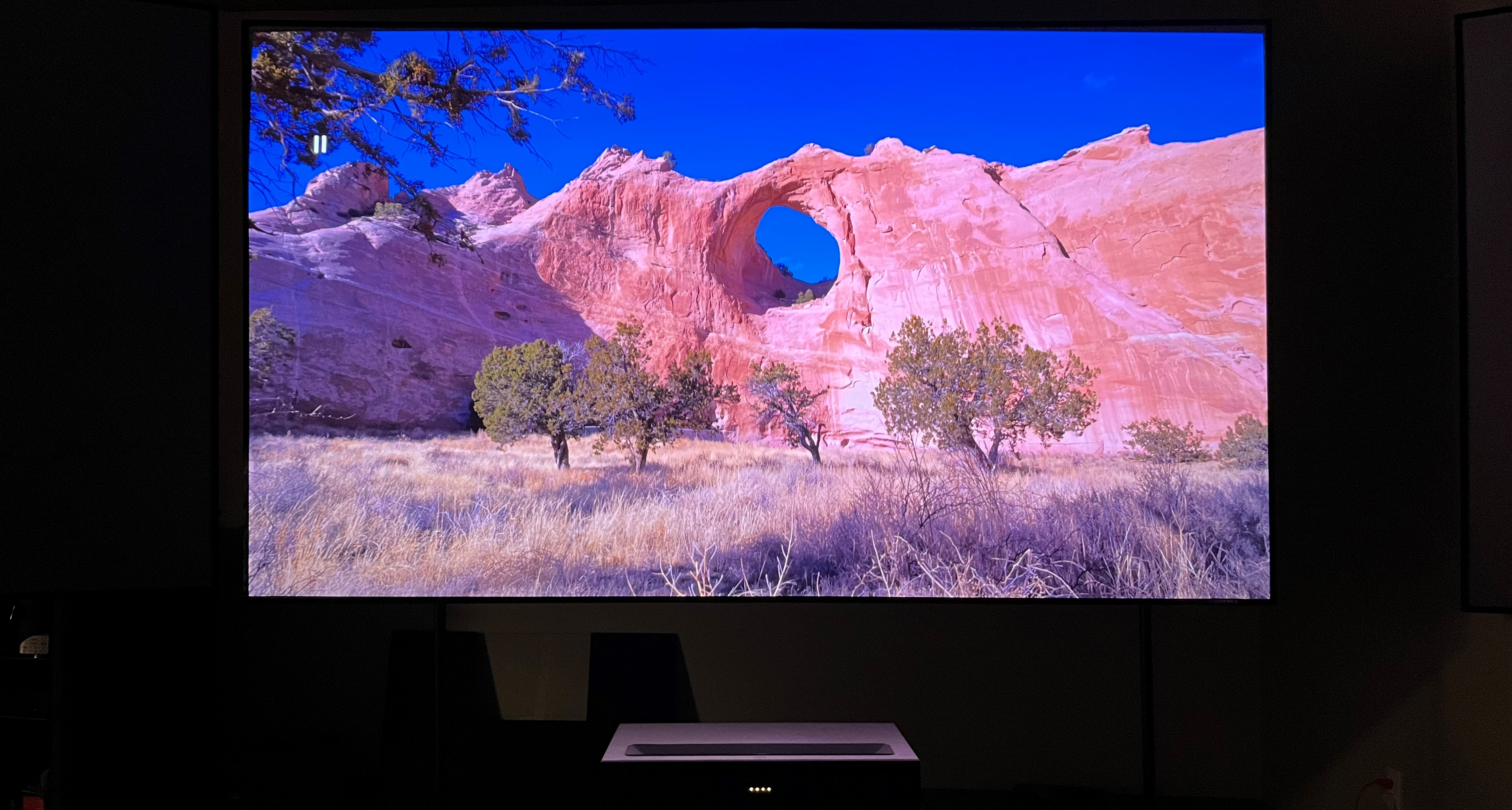I tested the first 4K projector with Dolby Vision, and it’s stunning

I recently had the unique opportunity to serve as a judge in a group test of 14 ultra short throw (UST) 4K projectors. For that event, which was sponsored by projector evaluation and info website Projector Central and A/V retailer ProjectorScreen.com, myself and 5 other judges spent hours eyeballing the latest and greatest USTs in the single-laser and tri-laser categories.
Of the group, one projector stood out above the rest: the Formovie Theater, a $2,999 tri-laser model.
Interestingly, the Theater is one of the first projectors to support Dolby Vision high dynamic range (HDR), a feature typically found on the best 4K TVs, but absent from projectors aside from the new Formovie and flagship models from Hisense.
A brightness idea
What’s so special about Dolby Vision that a projector would benefit from having it?
Projectors deliver limited brightness in comparison with flat-panel TVs, some of which are capable of hitting 2,000 nits or higher light output. That’s enough to let them compete with daylight when viewing in bright rooms and, just as important, display the full range of highlight detail in most movies and TV shows with HDR.
Since projectors aren’t as bright as the brightest TVs, they need to perform a process known as HDR tone mapping.
On a typical model, this is done using the HDR10 format: the maximum and average brightness level of a movie or TV show with HDR is conveyed via metadata, and the projector then works with that static information to best display it within its limited brightness range.
Sign up for breaking news, reviews, opinion, top tech deals, and more.
Dolby Vision, in contrast, is a dynamic HDR format: the maximum highlight and black level in images is determined scene-by-scene (in post-production), and the TV – or projector – uses that metadata to perform tone mapping on a dynamic basis. The benefit here is that the full brightness and contrast capabilities of the display get utilized, with images taking on a more consistently punchy look.
Two of the key testing parameters in the UST projector Showdown that the Formovie Theater projector excelled at were contrast and shadow detail. Judging from that, its support for Dolby Vision, which was used in a fair amount of the material we used for testing, was a factor in its overall performance.
Dolby Vision: doing without
One of the other UST projectors tested in the Showdown was the Hisense PX-1 Pro, which ranked third place in the tri-laser category just below LG’s HU915QB.
The PX-1 Pro is scheduled to get Dolby Vision via a firmware update – the company’s website says that will happen in summer 2022 - but it was not included in the model we used for our evaluation.
While the PX-1 Pro ranked well on testing parameters like detail, color accuracy, and tone mapping, it fell short of the other models when it came to black level and shadow detail – it simply couldn’t display a deep black. One has to wonder how much of a difference the forthcoming Dolby Vision update would have made here, possibly letting the PX-1 Pro compete equally with the Formovie Theater, or even best it.
The second-place winner in the tri-laser test was LG’s HU915QB.
While this model also lacks Dolby Vision, it has an Adaptive Contrast setting that works alongside its HDR tone mapping to dynamically optimize picture contrast on a frame-by-frame basis – kind of like what Dolby Vision does. Not surprisingly, the HU915QB ranked high for its contrast, black level, and shadow detail, slotting in just under the Formovie Theater on those parameters.

For the Showdown, JVC’s $16,000 DLA-NZ8 laser-based 4K projector was used as a reference to evaluate the various UST models against. While the JVC also lacks Dolby Vision, it does support the HDR10+ format and has even more sophisticated dynamic HDR tone mapping and optimization settings than the LG HU915QB.
Specifically, the JVC has a Theater Optimizer setting that lets you input information about the size, material, and gain of the screen you are using, among other things. It then takes that info and combines it with its Frame Adaptive HDR processing to modulate picture gamma – the range between deepest black and whitest white – dynamically on a scene by scene or a frame by frame basis.
Having seen the results of this processing first-hand, I can confirm it works extremely well. Clearly, projector makers are able to implement technically advanced methods to work around any brightness limitations of their products – the LG and JVC projectors used in the Showdown provide ample proof of that.
But to judge from the performance of the Formovie Theater, the overall winner and the one that came closest to matching the performance of the reference JVC, adding Dolby Vision support can also go a long way toward making even affordable models rank among the best 4K projectors.

Al Griffin has been writing about and reviewing A/V tech since the days LaserDiscs roamed the earth, and was previously the editor of Sound & Vision magazine.
When not reviewing the latest and greatest gear or watching movies at home, he can usually be found out and about on a bike.